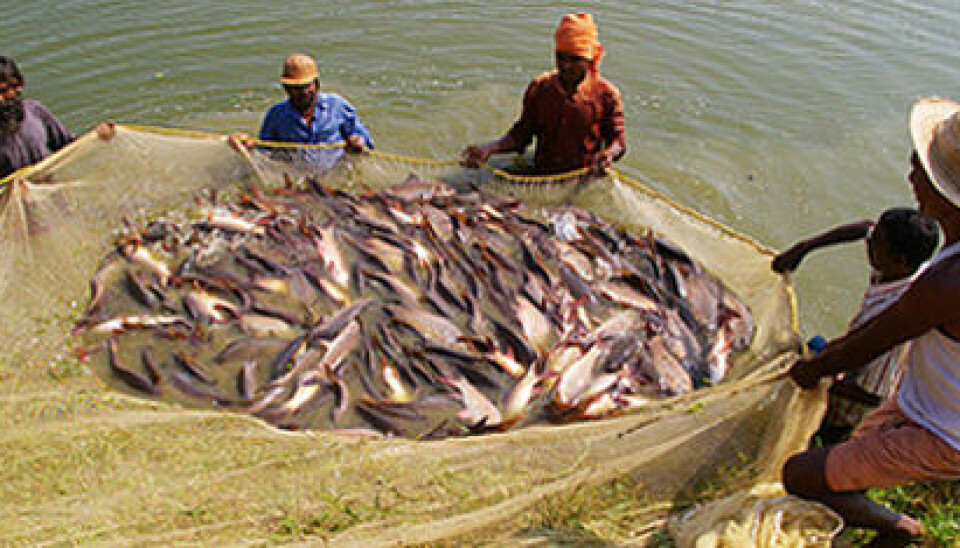This article was produced and financed by The Research Council of Norway

Combating disease in shrimps and carp
Shrimps and rohu carp are gene sequenced by Norwegian and Indian scientists. The result is extensive databases of genetic material that can be used to study disease resistance.
Denne artikkelen er over ti år gammel og kan inneholde utdatert informasjon.
Rohu carp is an important aquaculture species in India. Over 1 million tonnes of rohu carp are produced annually in India and farming of carp in Asia is of far greater significance to global food supply than for example Norwegian salmon farming.
“The database of gene sequences from rohu carp contains more than 137,000 gene sequences and is an important resource for future genetic studies,” says Senior Scientist Nicholas Robinson from Nofima, who was in charge of the Norwegian component of this Norwegian-Indian collaborative project which began in 2008.
The goal of the project is to develop technologies that can give carp and tiger shrimps, which are important aquaculture species in India, improved resistance against disease. Both species are grown extensively in ponds by poor farmers in rural areas.
The study has also given the Norwegian partners analysis tools that may be used in new projects involving species such as salmon and cod.
Serious diseases
The diseases furunculosis and white spot syndrome virus (WSSV) have had a dramatic negative impact on aquaculture production of carp and shrimps, both in India and on a global basis. By developing tests and methods to improve resistance against these serious diseases, the project will make a significant contribution to more sustainable and productive aquaculture in this region.
“Outbreaks of white spot syndrome virus can result in 100 percent mortality at the fish farms,” says Nicholas Robinson.
The research team aims to identify genes that are associated with resistance to furunculosis in rohu carp and WSSV in shrimp, and to improve disease resistance by selecting animals that have the best variants of these genes for breeding.
Genetic resource
Some of the 50,000 genetic markers (single nucleotide polymorphism or SNP) which have been identified in rohu carp show large differences in allele frequencies between lines which were initially selected for high and low resistance to furunculosis. Particular genes are more highly expressed (ie have a higher rate of transcription into proteins) in resistant fish than susceptible fish. This knowledge about genetic variation and gene expression may be utilised in the future work to increase resistance against disease and shows the benefit of the work so far.
“We have also identified more than 136,000 gene sequences for the tiger shrimp. More than 50 percent of the established DNA segments represented previously unknown genes,” says Robinson. Consequently, the comprehensive sequencing and mapping approaches used in the study provides a large potential to find genes of importance for disease resistance and other important characteristics in farmed shrimps.
Must be continued
The Nofima scientist, who originates from Australia, refers to good experiences from the collaboration and communication with the Indian scientists.
“We have developed a strong collaboration with the partners in India, and our project workshops have been a great success as they have allowed us to transfer knowledge, formulate detailed plans, resolve difficulties and develop innovative approaches. The project has allowed us to utilize the latest technologies and approaches. If we can utilize the knowledge and discoveries we make to improve the disease resistance of these species we will greatly assist the poor rural communities in India that farm these species. But we need to continue the work with our Indian collaborators so that these benefits can be realised. ” says Robinson.
The large amounts of data developed through the project will form the basis for applications for additional funding and, as such, a continuation of the valuable work. “In the first instance this will be beneficial for the Indian fish farmers, but it may also contribute to increased food production in India and elsewhere where these species are grown," says Robinson.






























